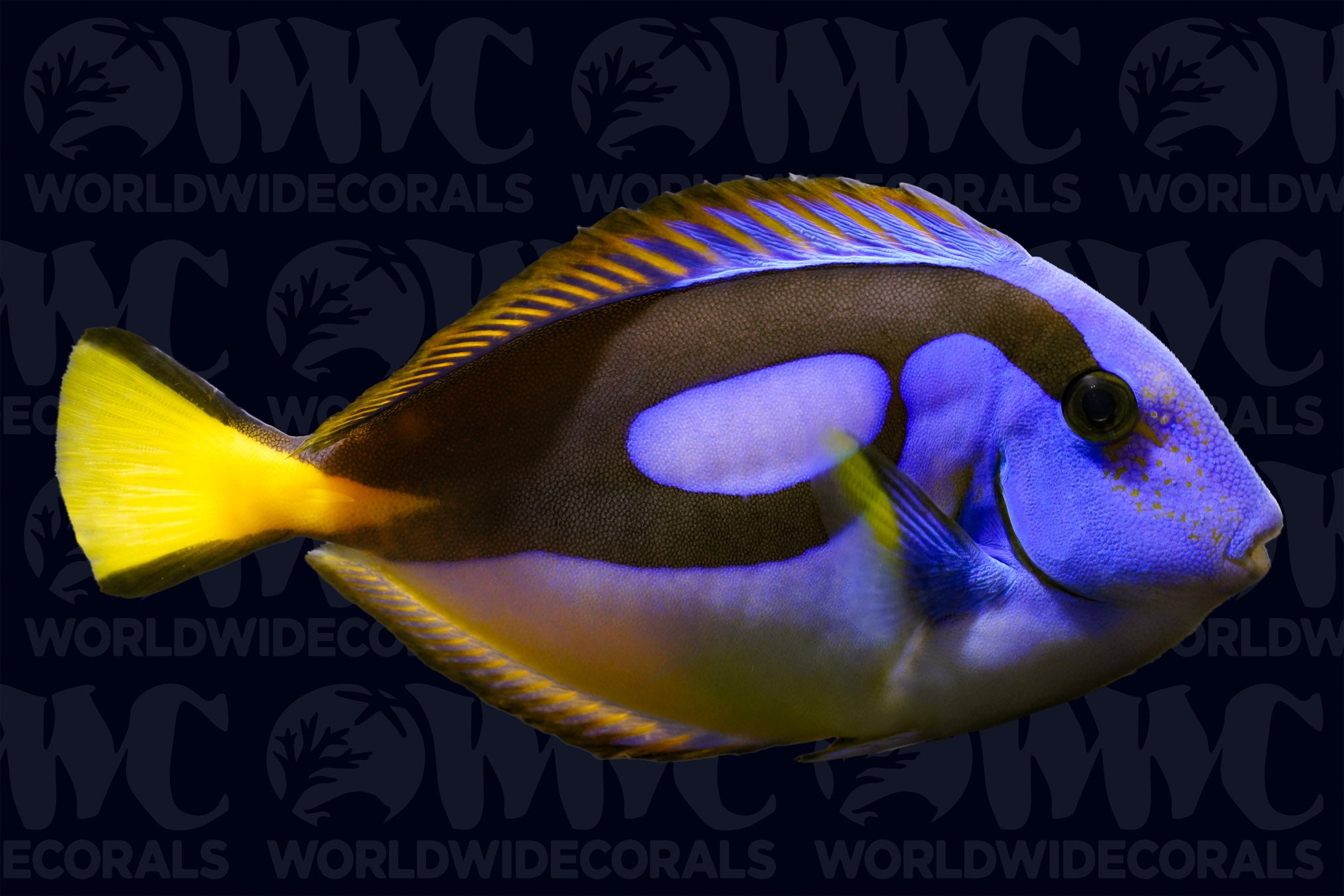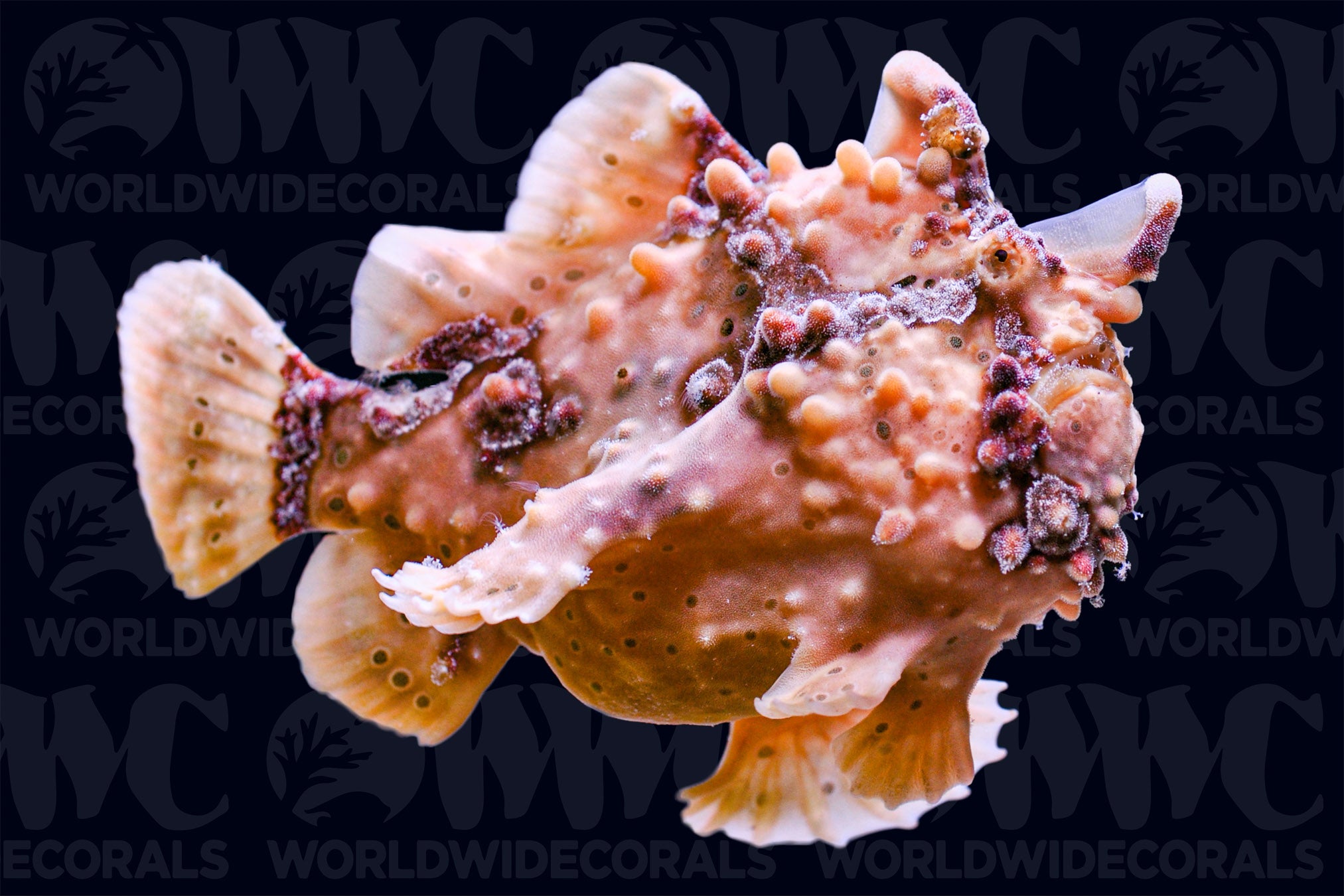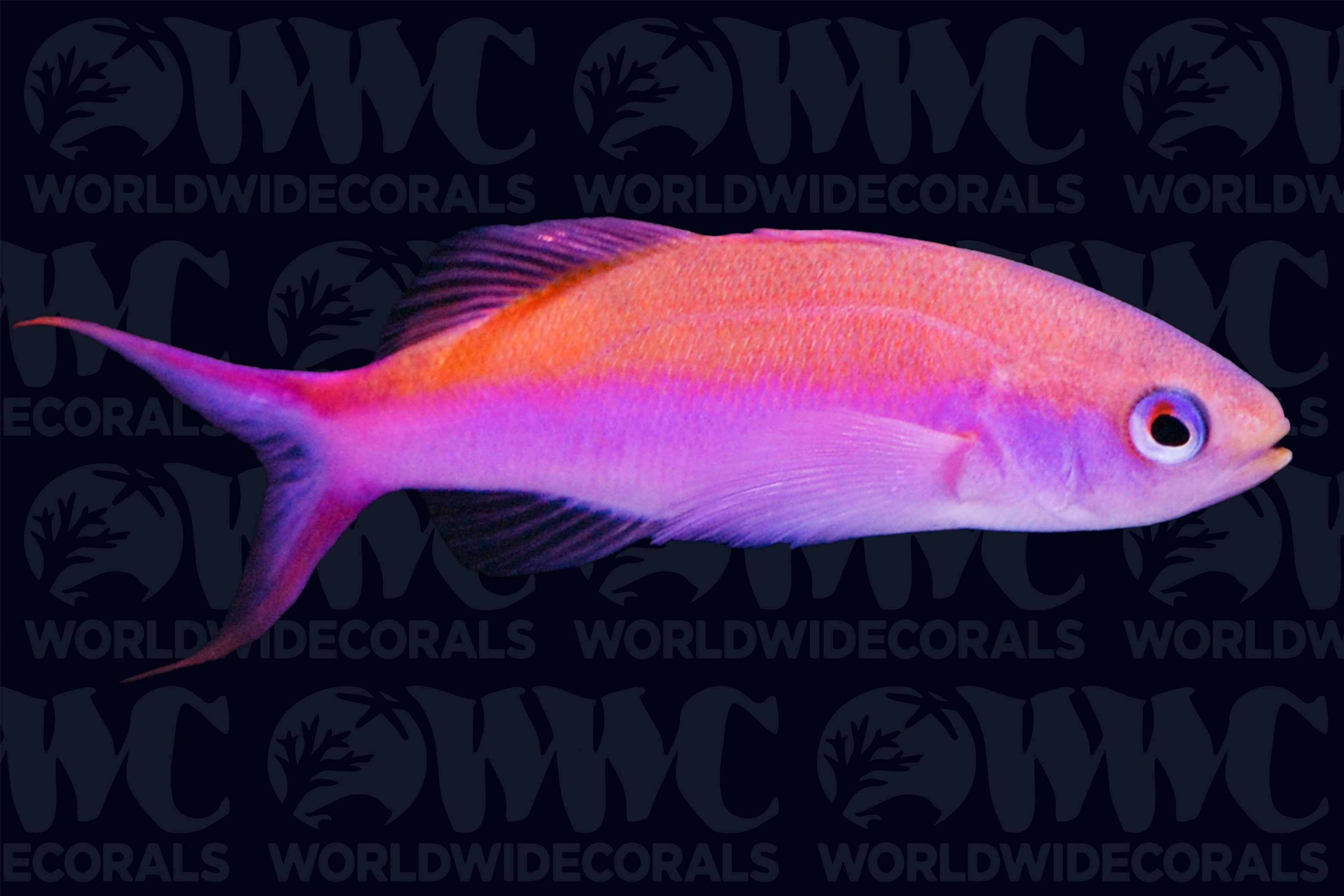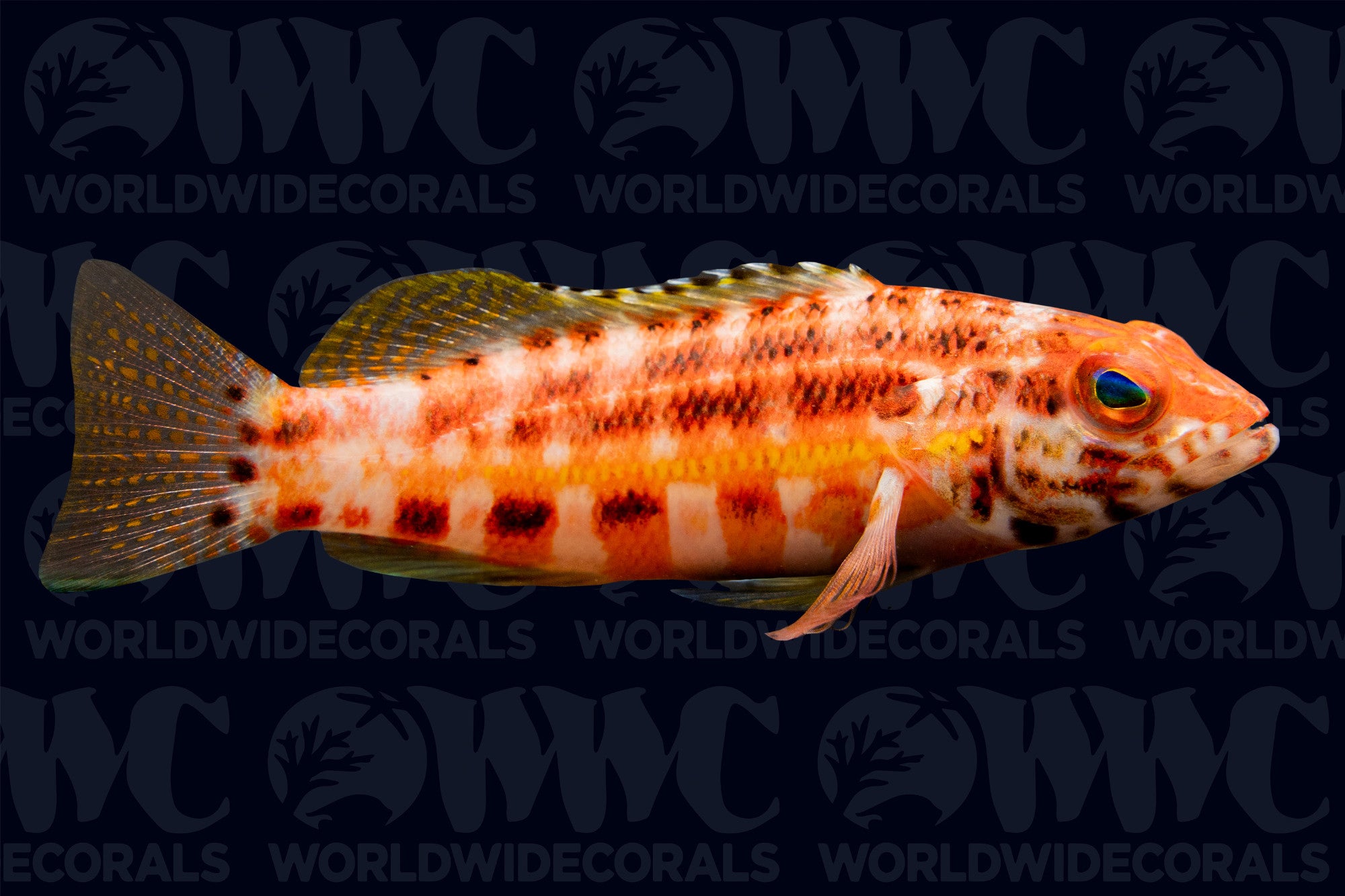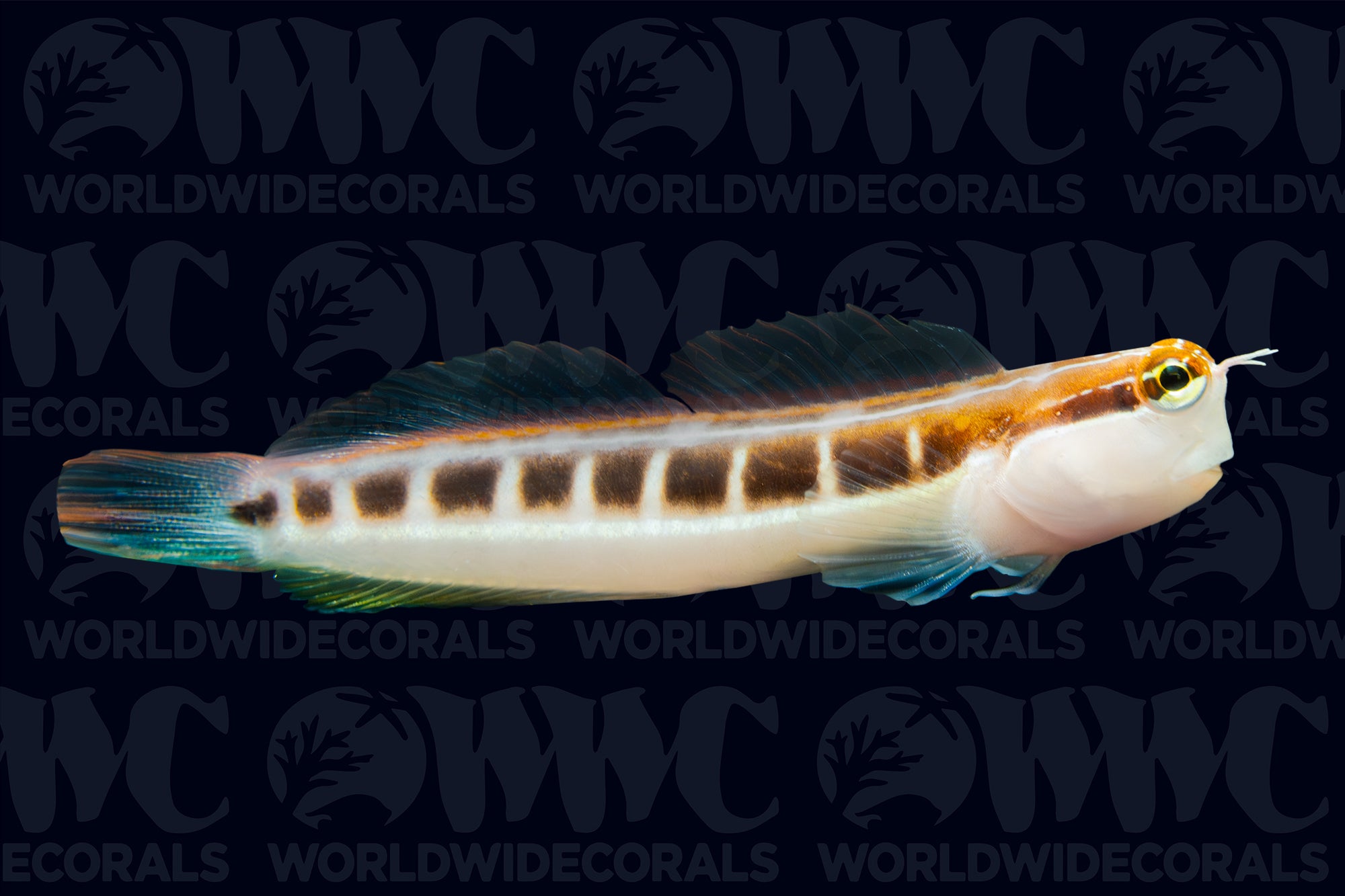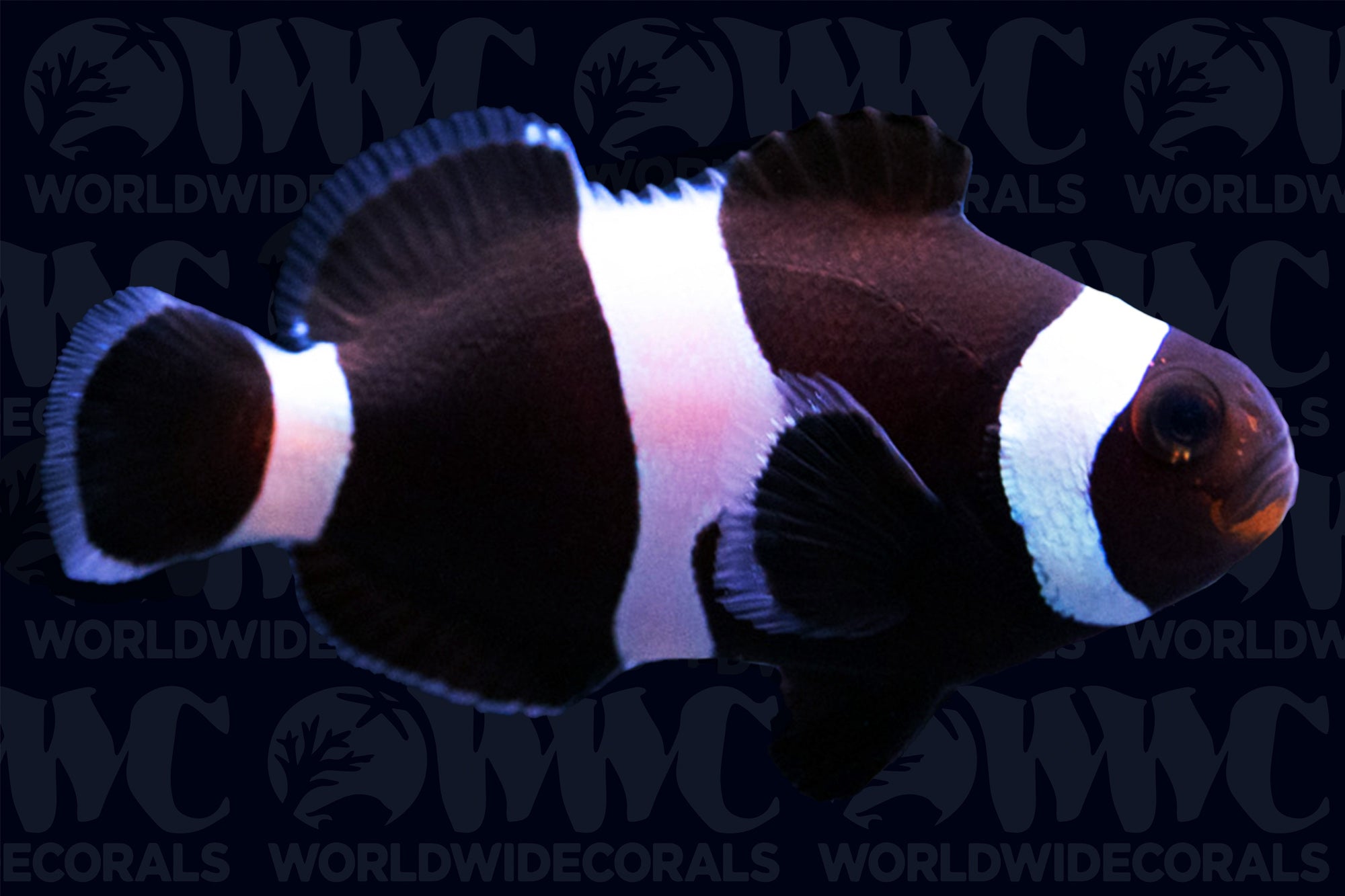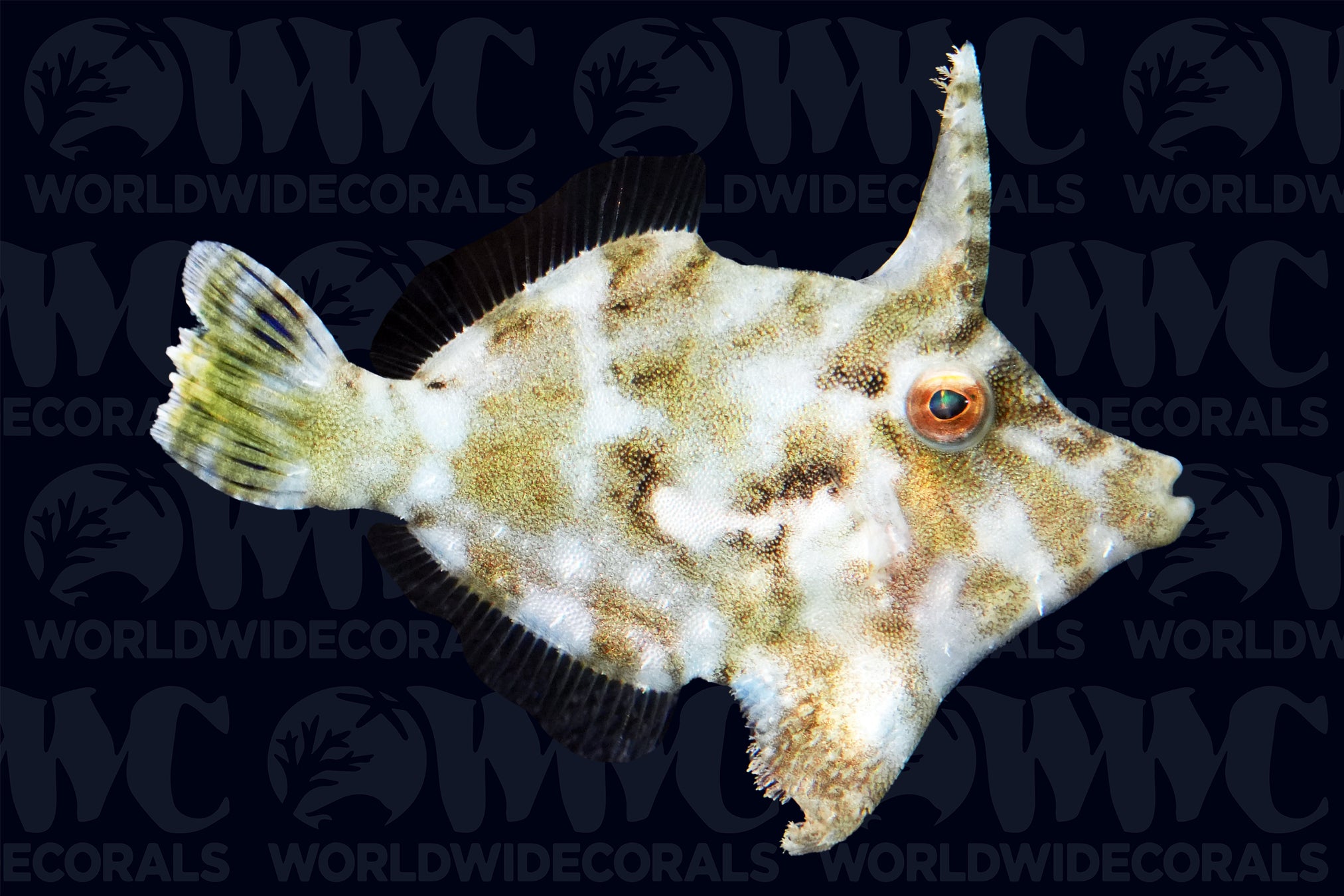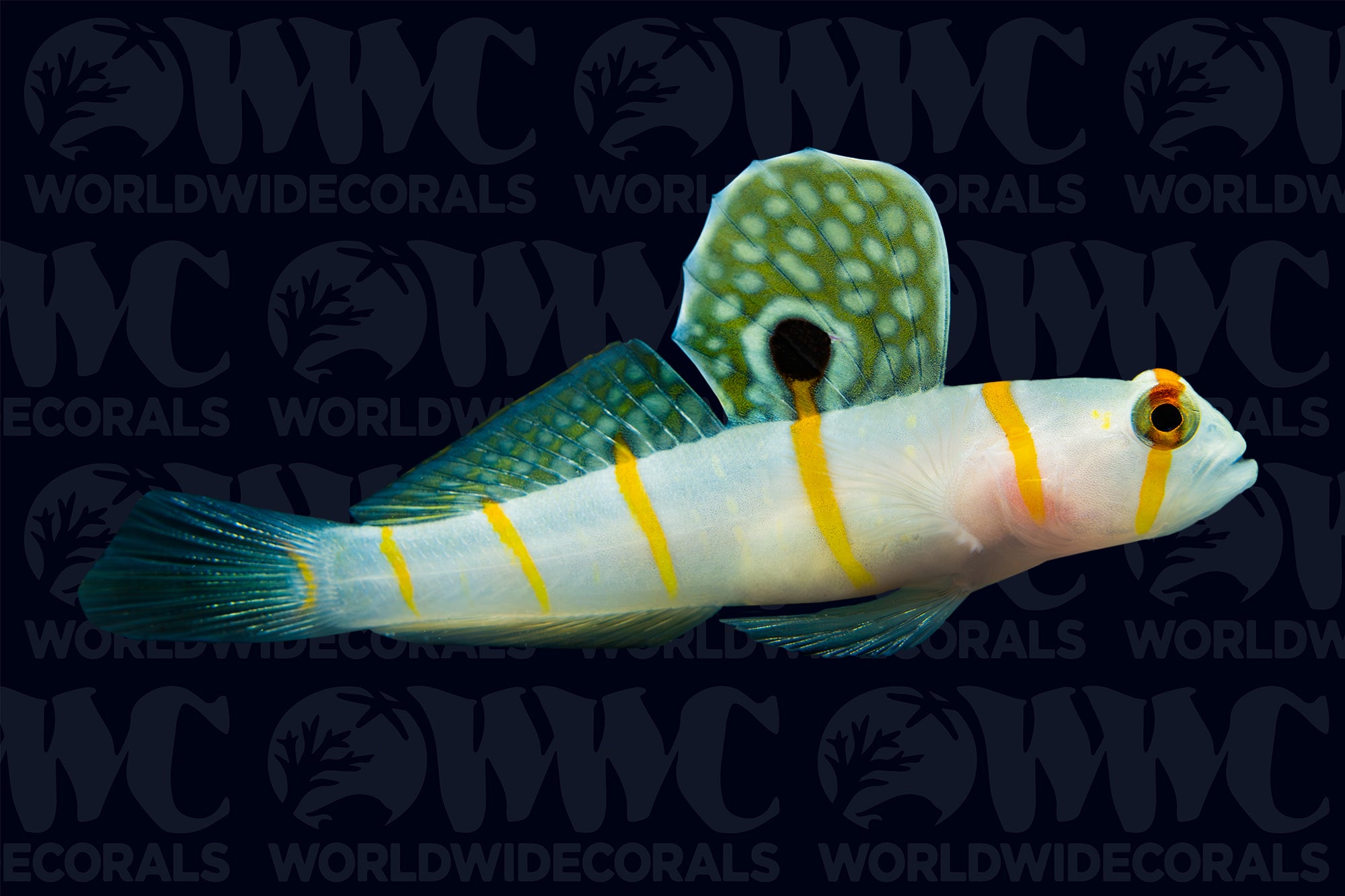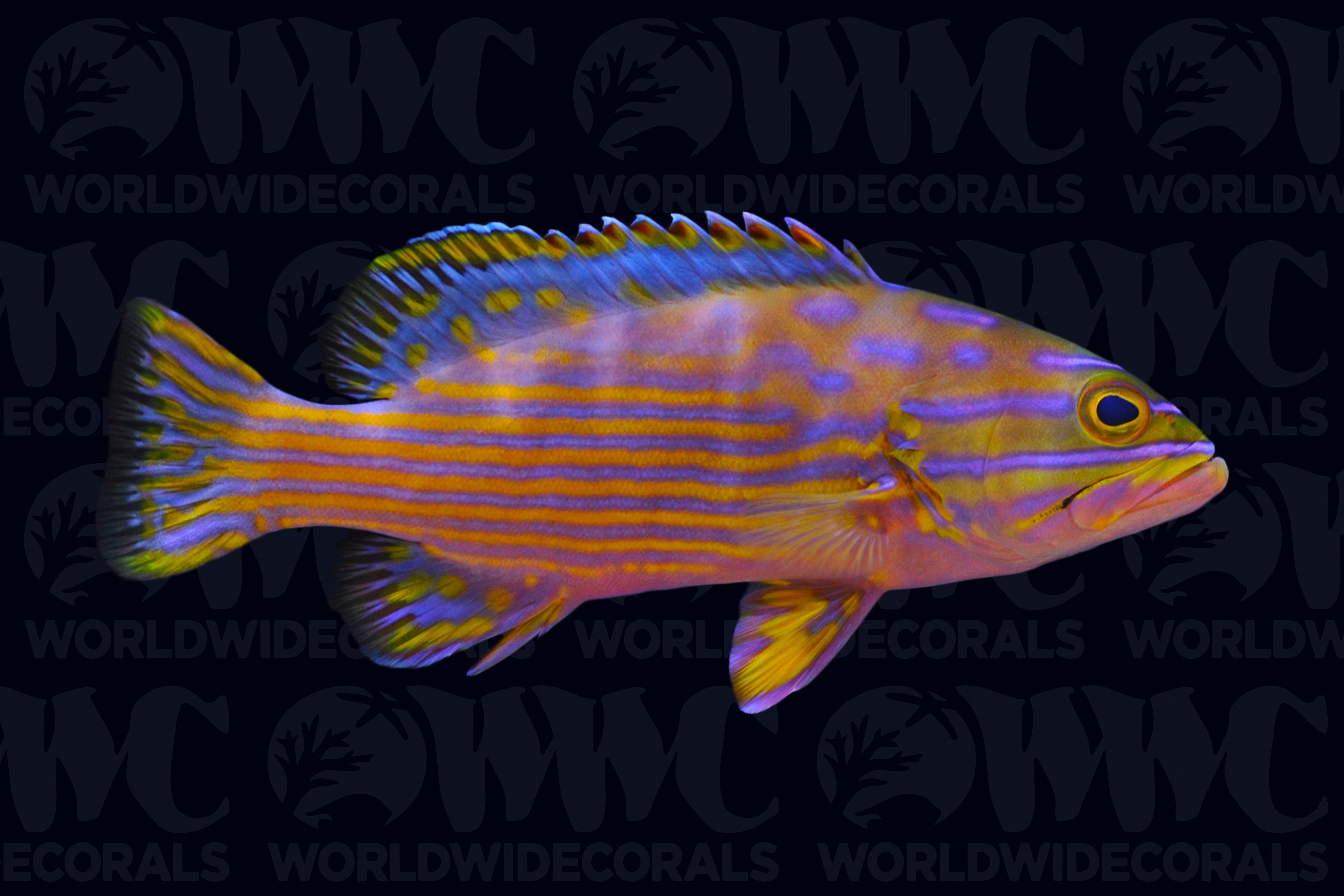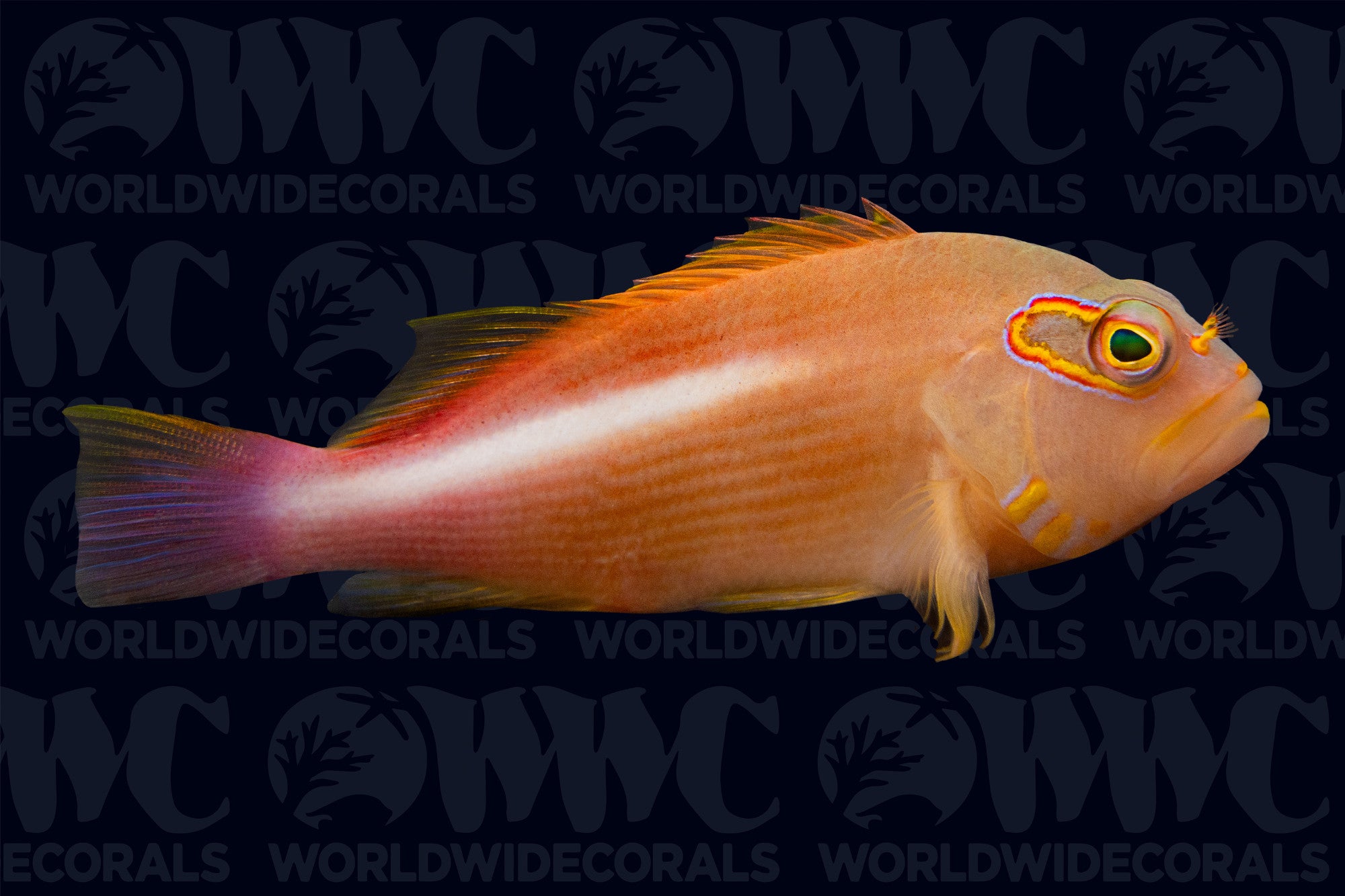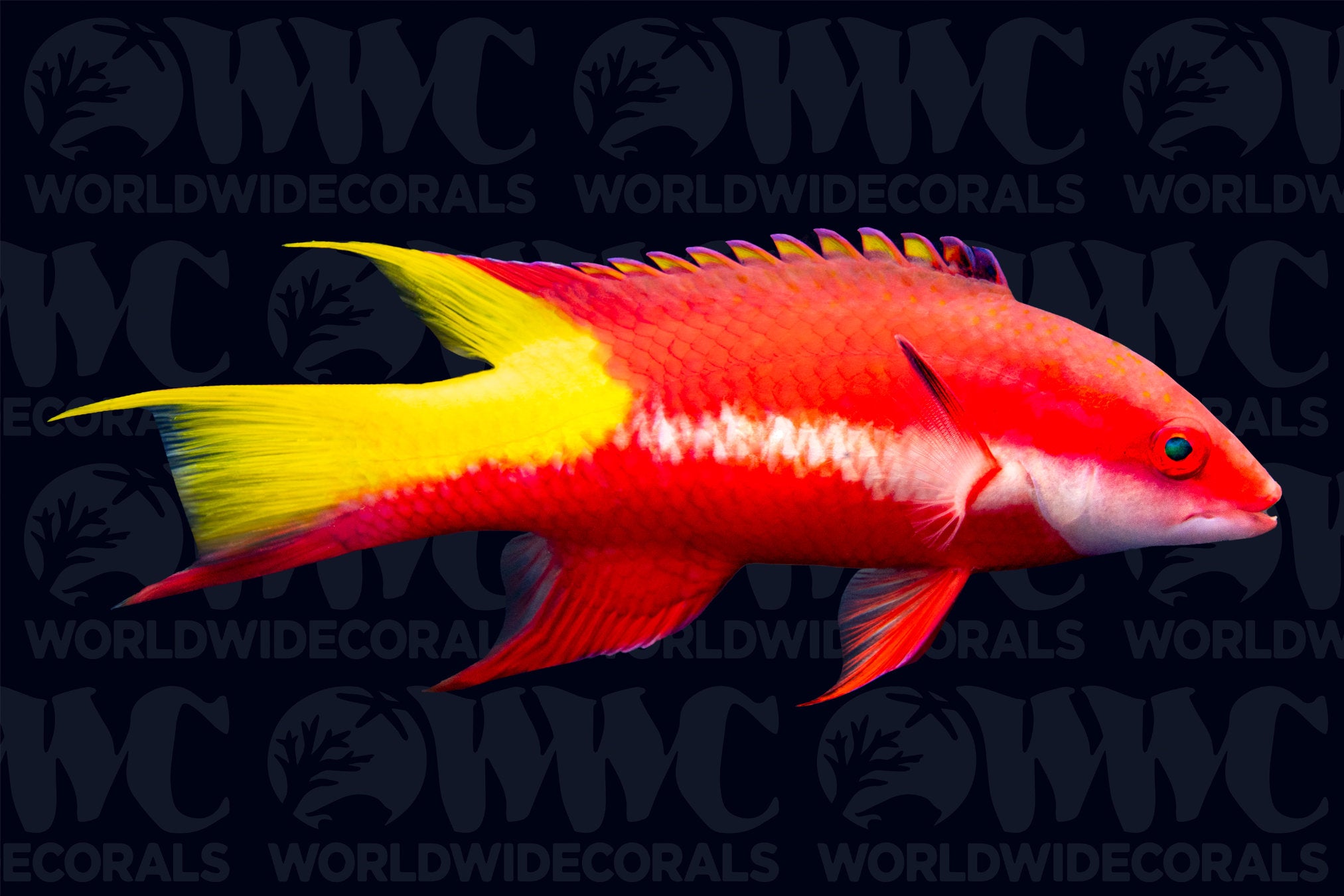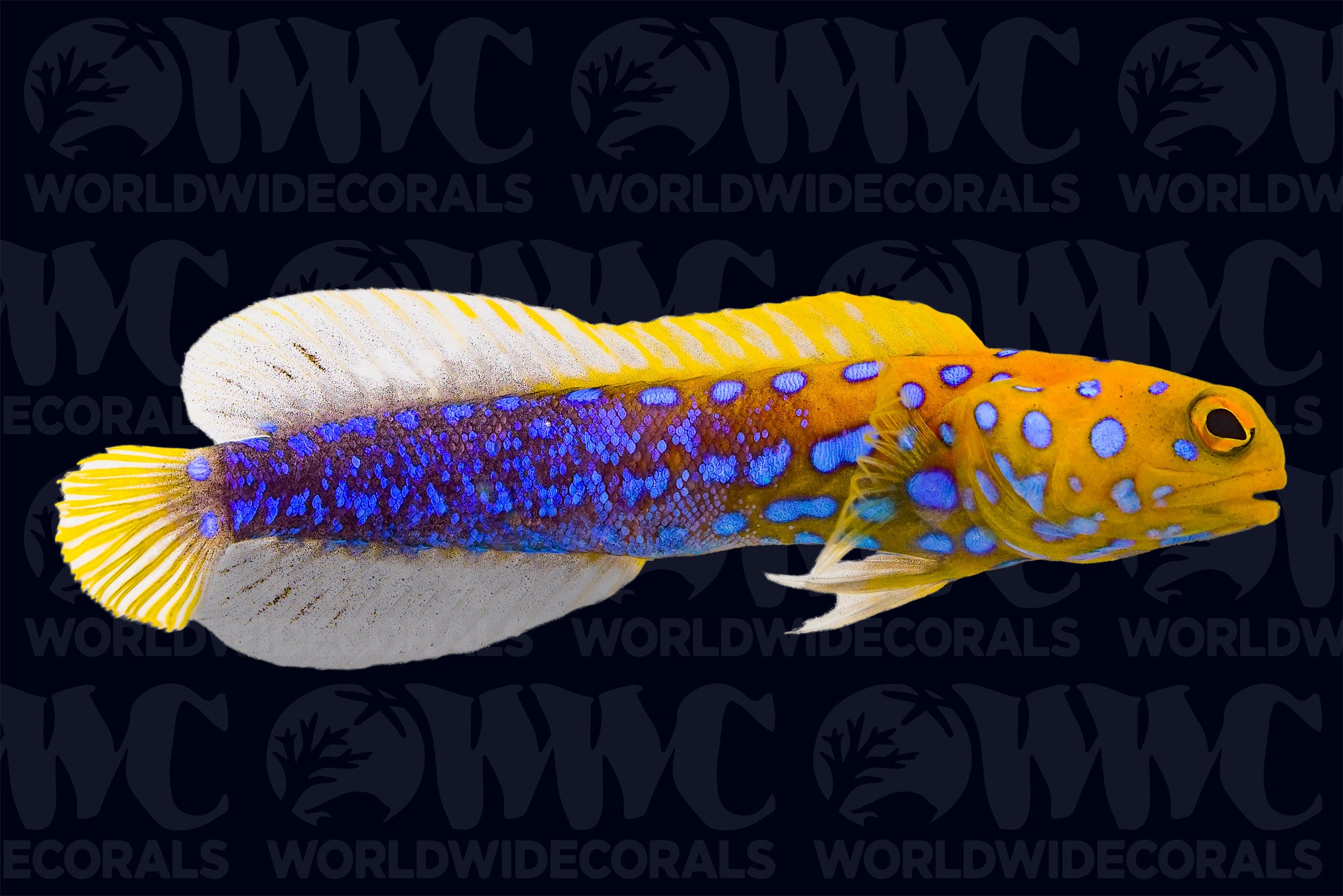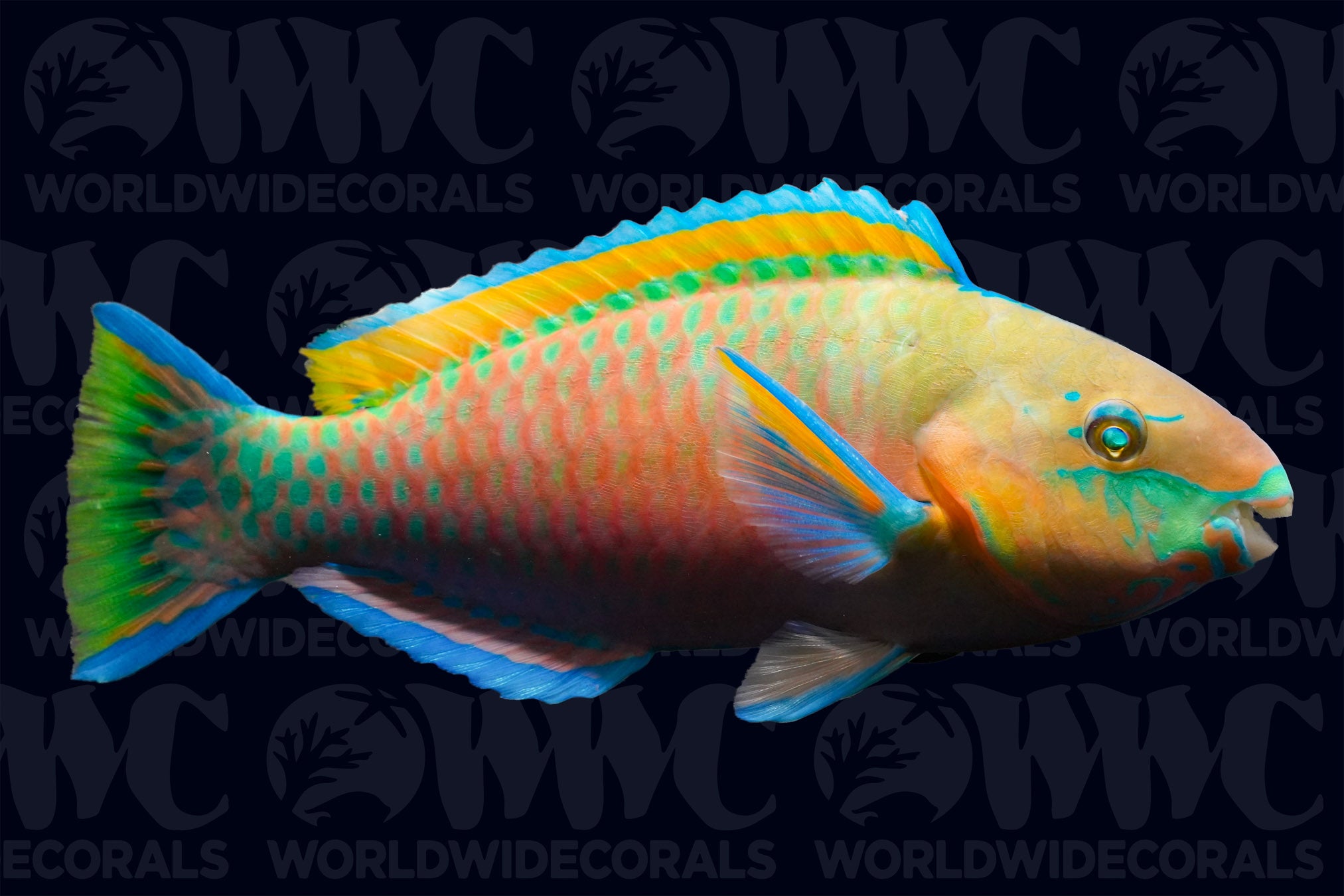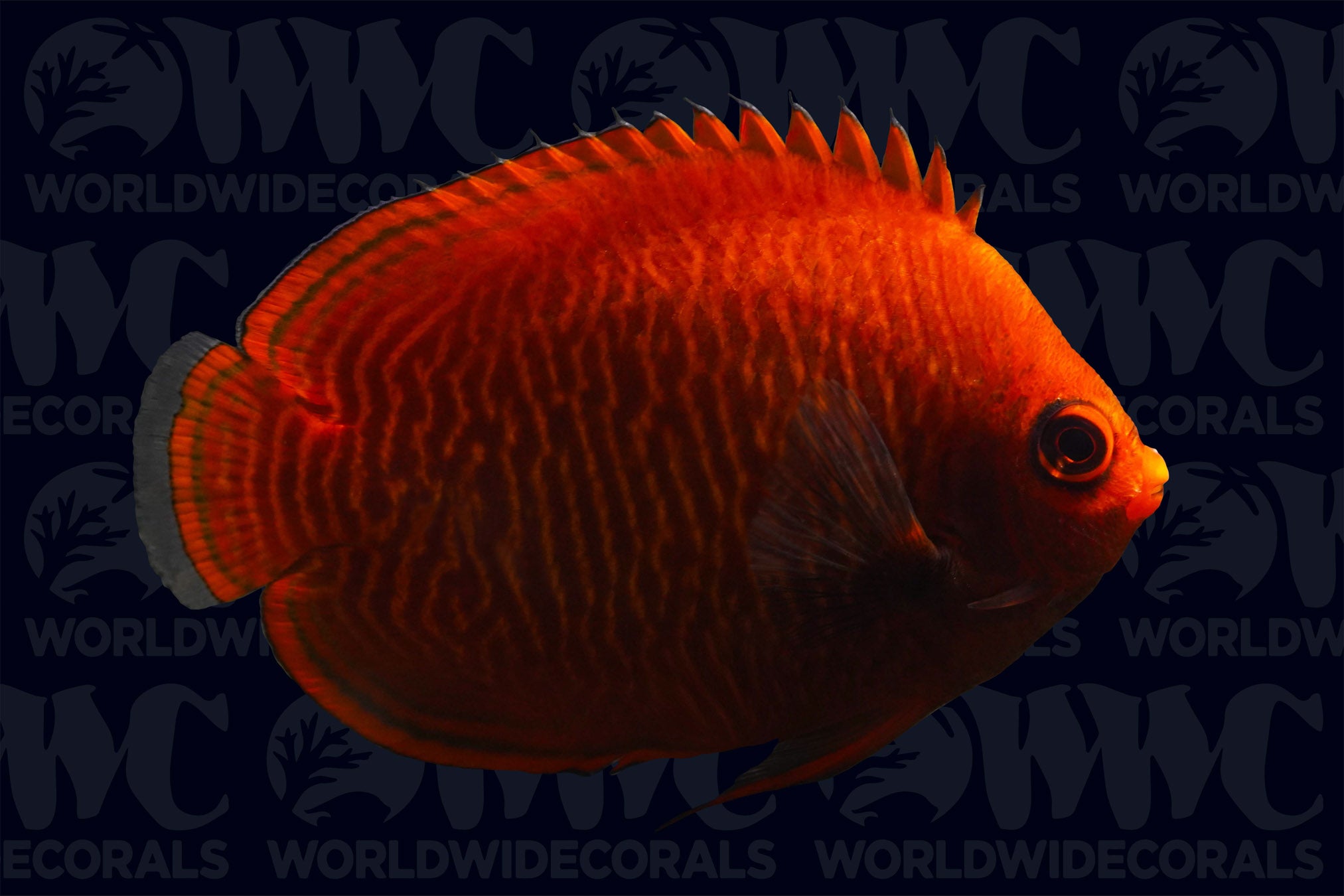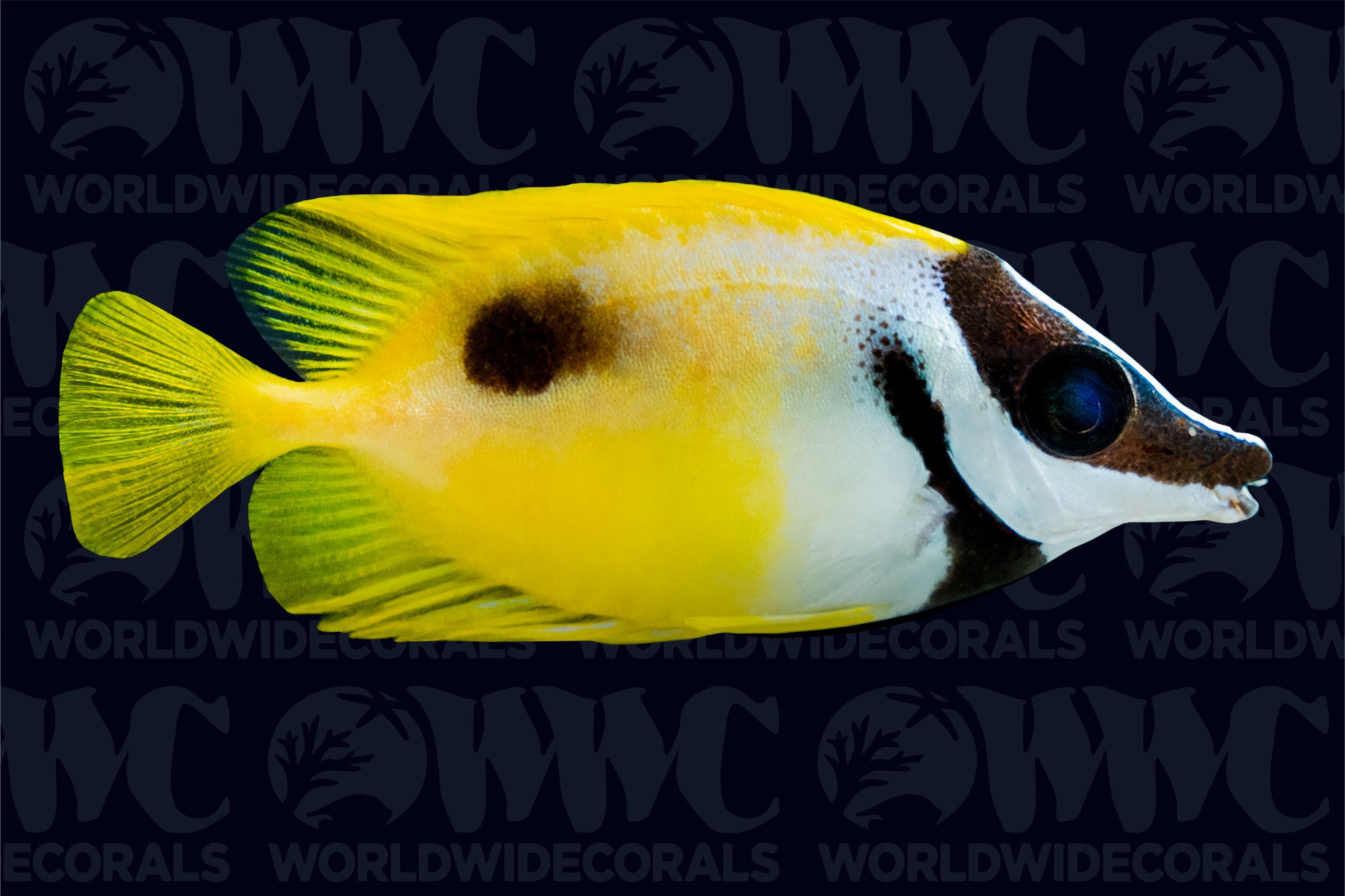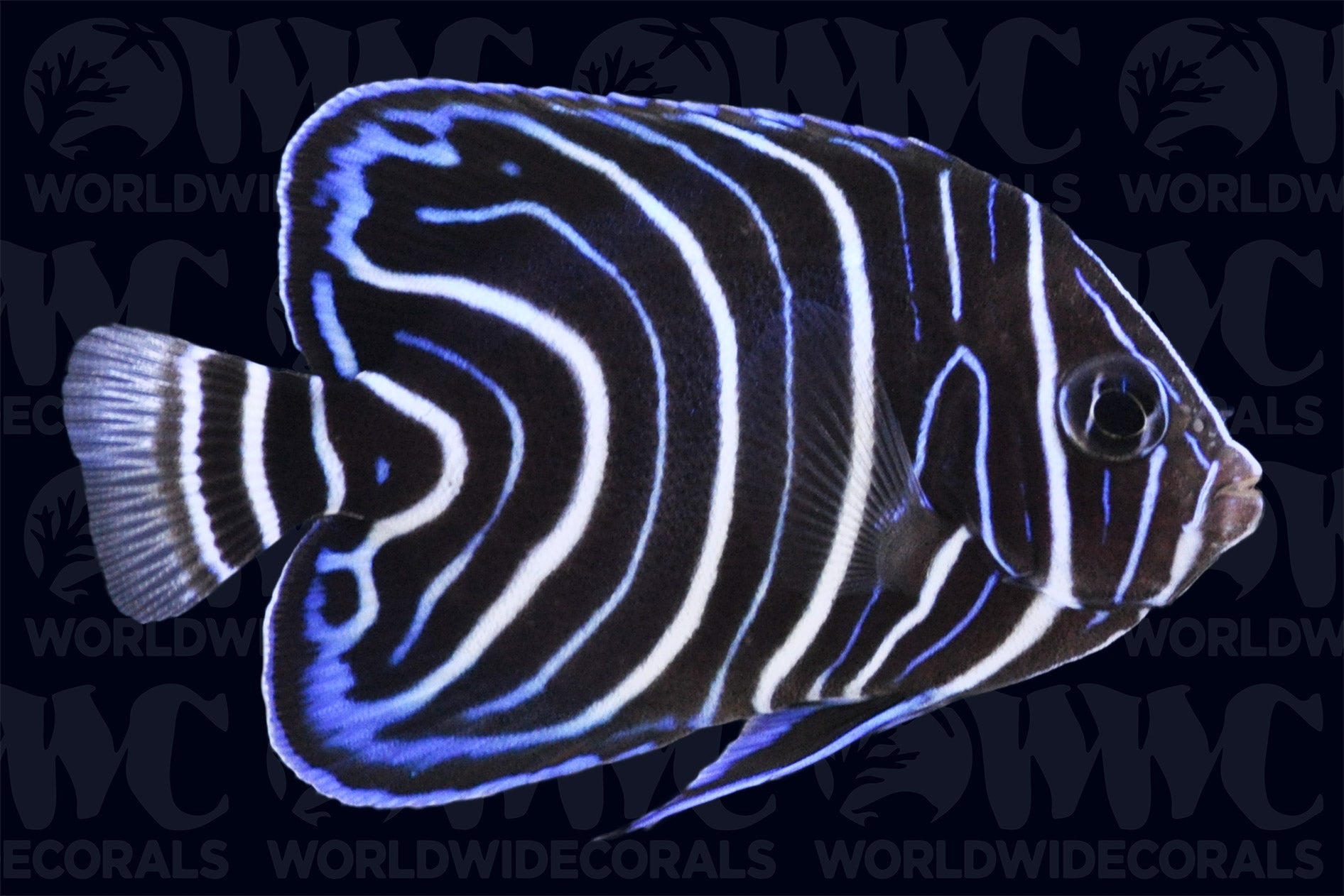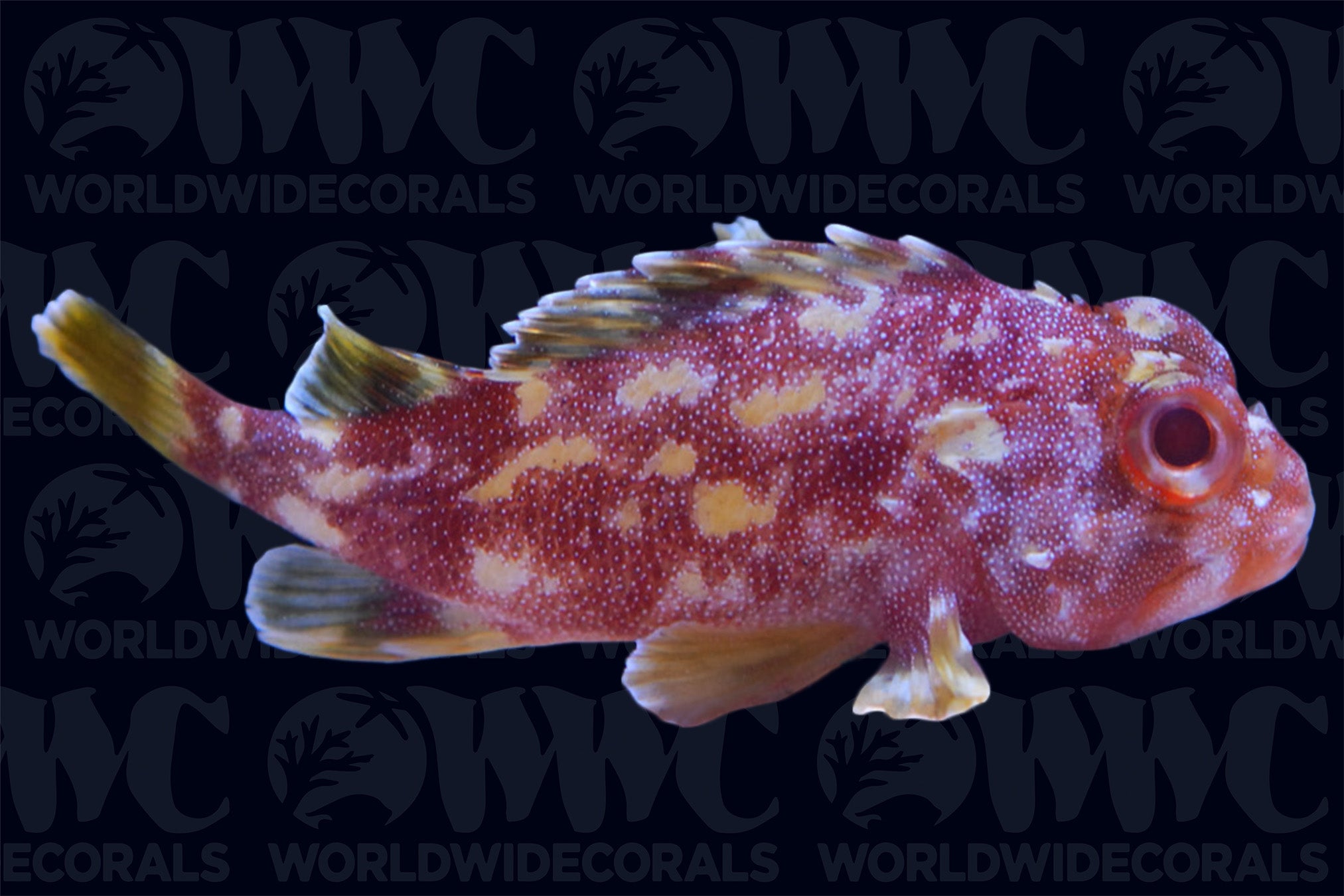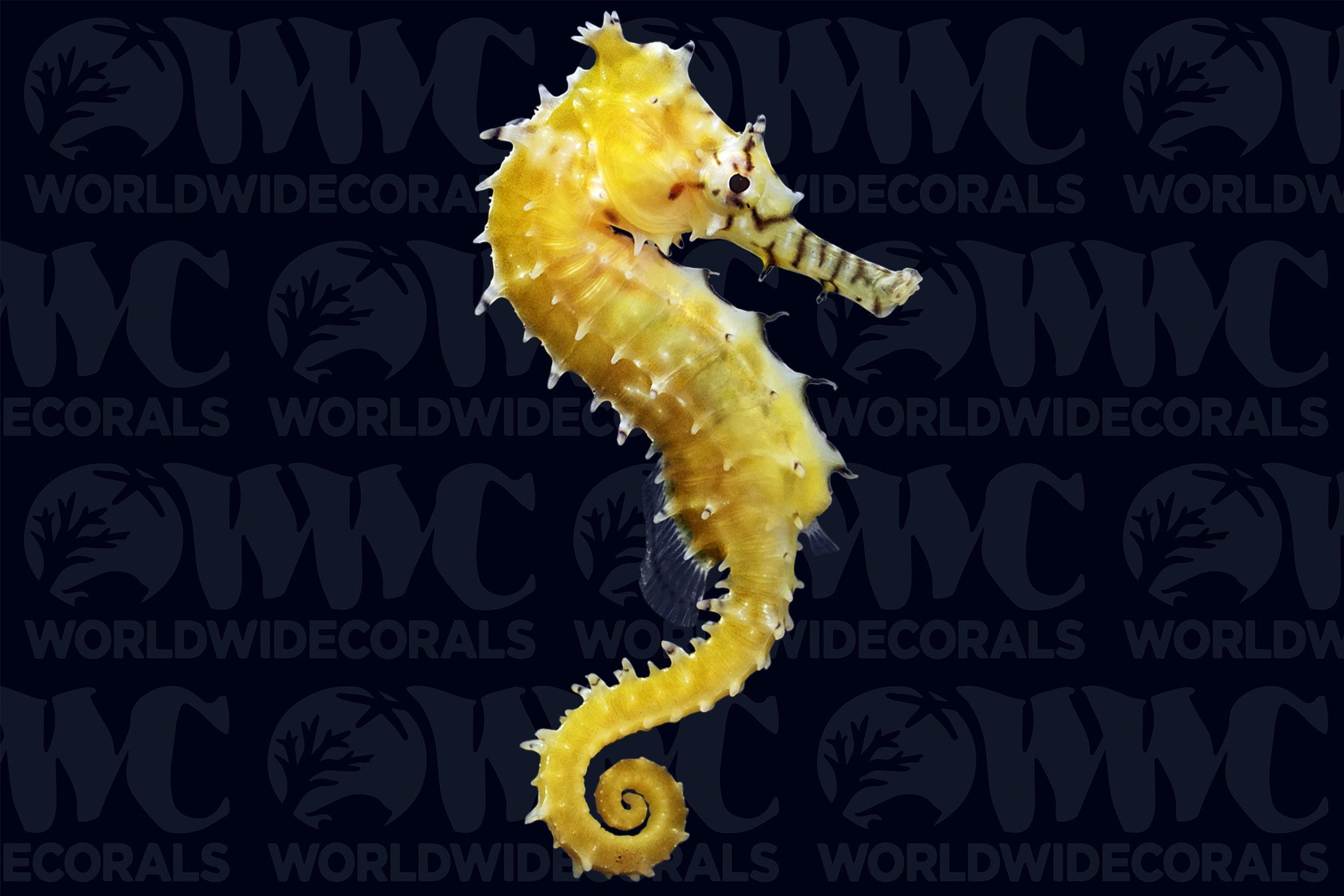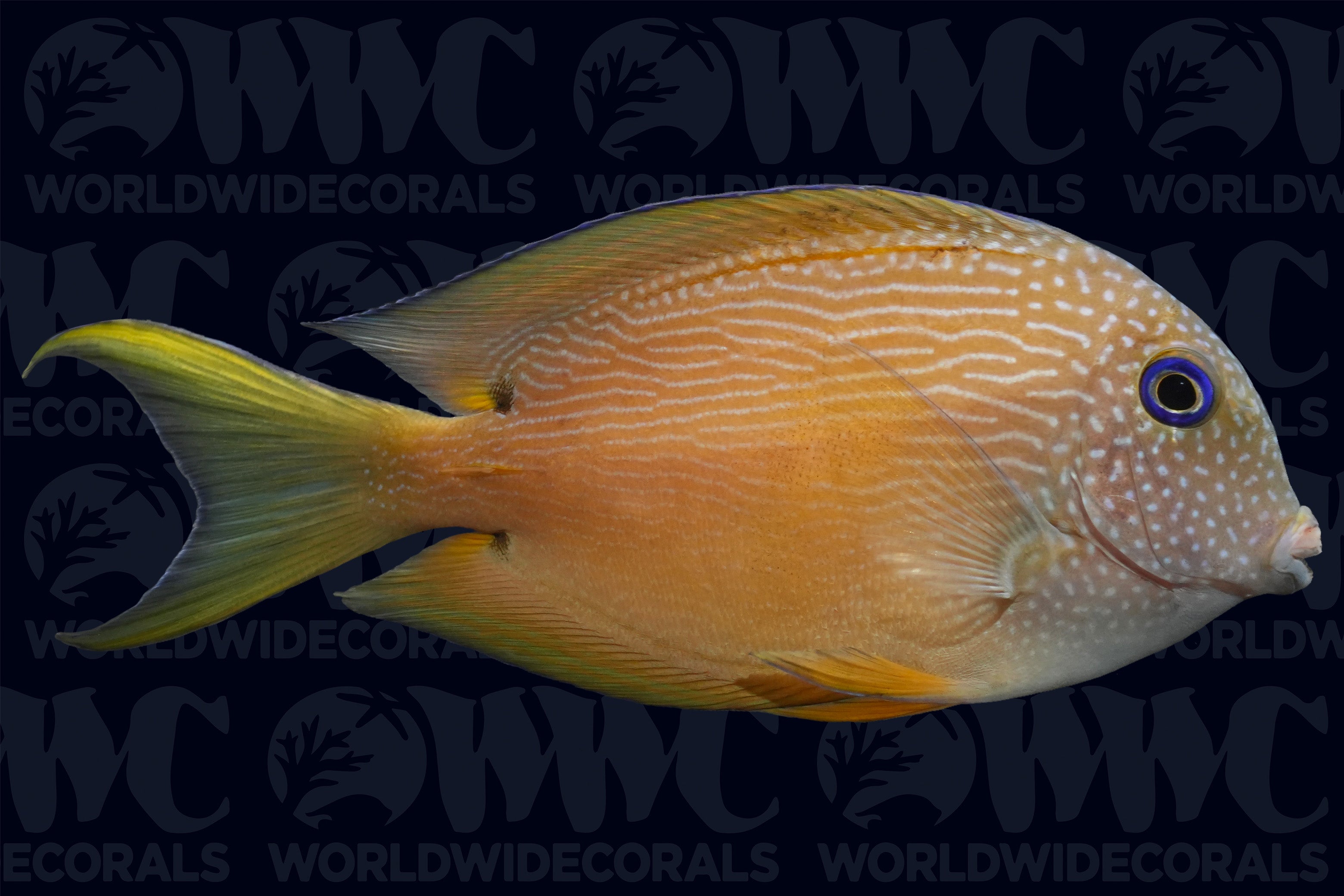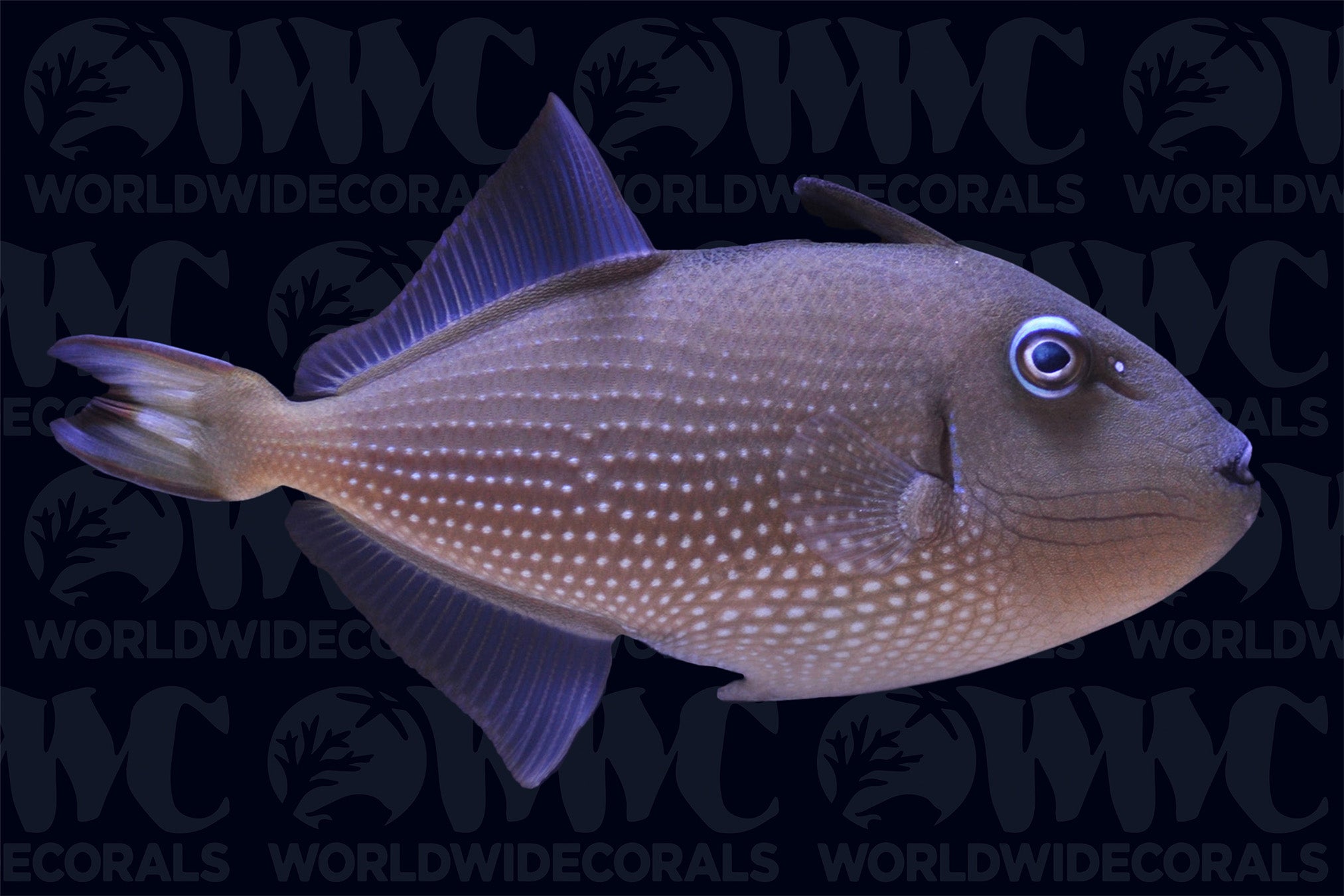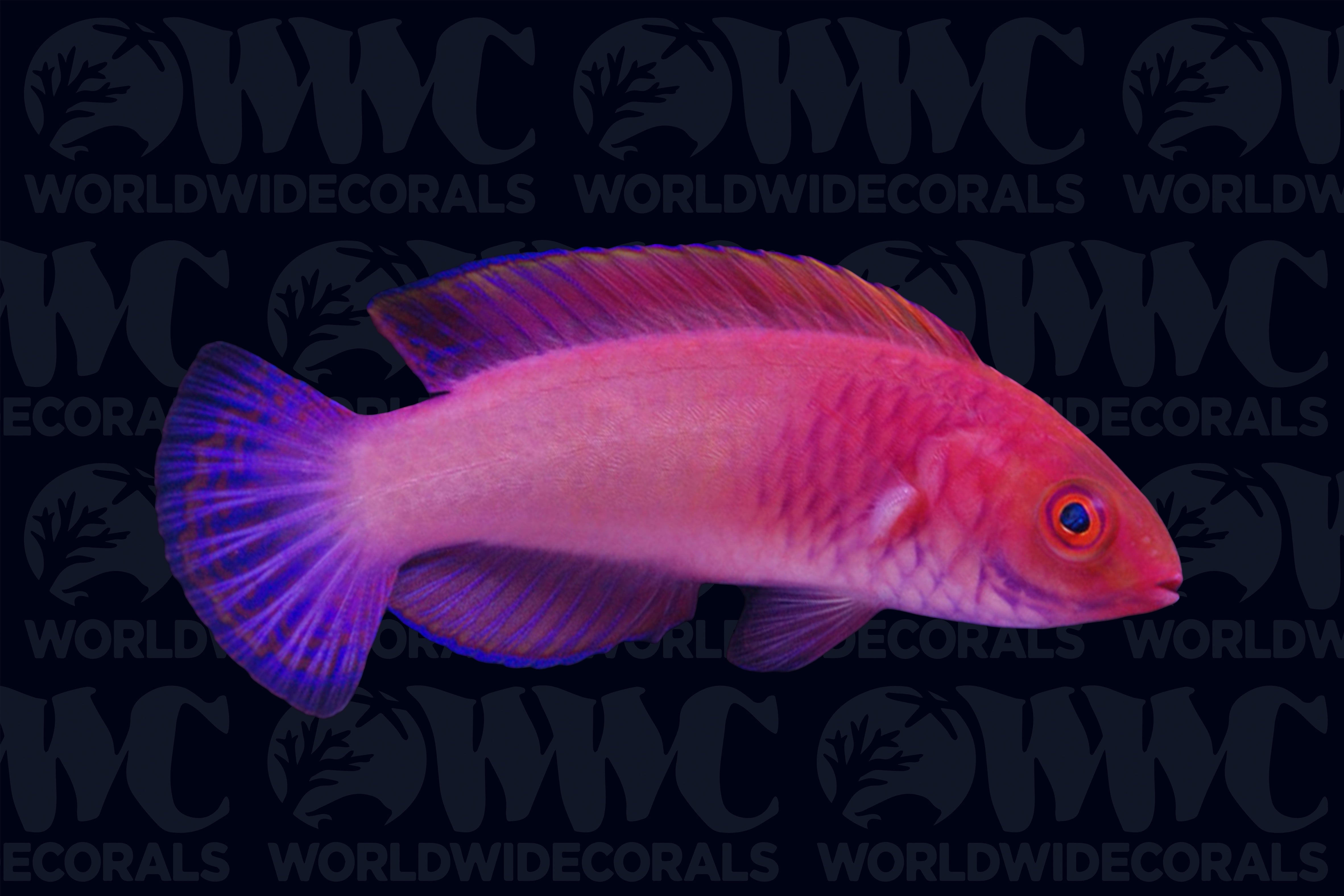Description
Paracanthurus hepatus
Tangs are also known as surgeon fish within the industry due to them having a sharp spine that looks similar to a scalpel at the base of their caudal fin (tail). They use this spine as protection against predators, so be sure to use caution when handling. In the wild, adults tend to live singly, so they should not be housed with fish that look similar in shape and colors. Tangs are considered to be peaceful towards most other tank mates and can be added to reef aquariums. The Yellow Belly Hippo Tang will grow to be one foot in size and will need an aquarium of 180 gallons. Providing rockwork will allow them to hide when stress and graze on algae. For continued health, provide a varied diet of frozen meaty foods, marine pellets and algae-based food to help strengthen their immune systems. The Yellow Belly Hippo Tang inhabits current-swept terraces of seaward reefs in the Indo-Pacific up to 40 meters deep. Juveniles can also be found in groups and are known for hiding tightly between coral.
Tangs are also known as surgeon fish within the industry due to them having a sharp spine that looks similar to a scalpel at the base of their caudal fin (tail). They use this spine as protection against predators, so be sure to use caution when handling. In the wild, adults tend to live singly, so they should not be housed with fish that look similar in shape and colors. Tangs are considered to be peaceful towards most other tank mates and can be added to reef aquariums. The Yellow Belly Hippo Tang will grow to be one foot in size and will need an aquarium of 180 gallons. Providing rockwork will allow them to hide when stress and graze on algae. For continued health, provide a varied diet of frozen meaty foods, marine pellets and algae-based food to help strengthen their immune systems. The Yellow Belly Hippo Tang inhabits current-swept terraces of seaward reefs in the Indo-Pacific up to 40 meters deep. Juveniles can also be found in groups and are known for hiding tightly between coral.
3 DAY GUARANTEE | Hassle Free | 100% Satisfaction | Online Orders Only


